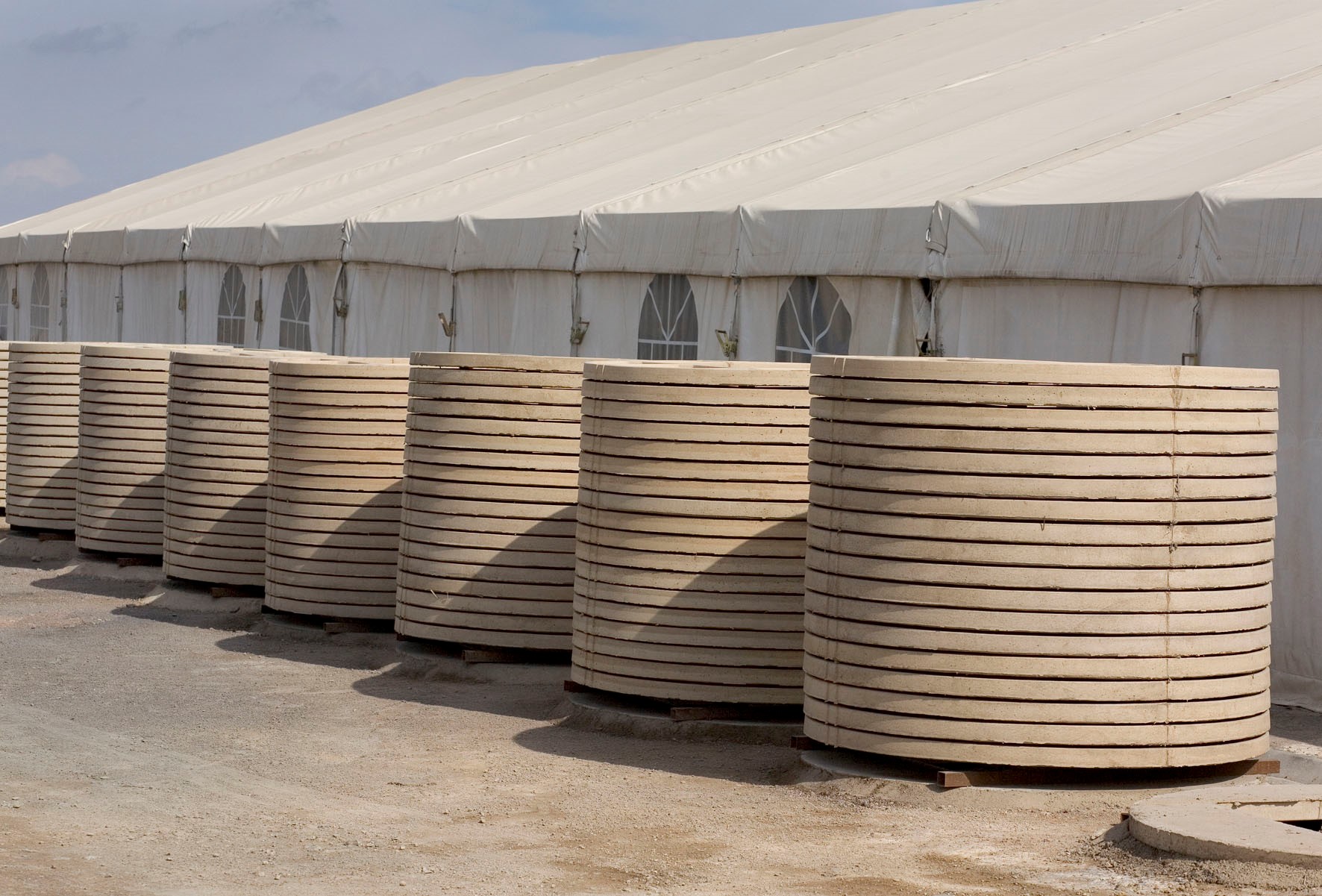
Description:
The Manhole is a working chamber, which is installed at intervals along a pipeline in order to provide access to the pipeline. This is mainly for inspections and maintenance.
The Precast Concrete Manhole offers a cost saving, time effective solution. The interlocking joint profile makes the installation quick and effective, and using a sealing material between the sections makes the chamber watertight.
The Manhole sections are supplied in lengths of 1000mmm, 500mmm and 250mm, and are available in diameters of 750mm, 1000mm, 1250mm, 1500mm and 1800mm.
Special sizes can also be accommodated.
Custom-made Products:
The Manhole chamber can be manufactured in lengths of 250mm, 500mm and 1000mm.
Step Irons can be cast into the wall of the chamber to facilitate easy access.
The standard diameters for the manholes are 750mm, 1000mm, 1250mm, 1500mm and 1800mm. Special intermediate or larger sizes can be designed and manufactured. These are subject to various material constraints, but will be evaluated by our engineers on an ad hoc basis.
Accessories:
Step Irons
Step Irons can be cast into the wall of the chamber to facilitate access.
Reducer slabs
In deep manhole chambers, the diameter of the chamber can be reduced in order to make it more cost effective. Detail on the Reducer Slab can be found under the SVP heading.
Cover Slabs
In order to seal the manhole chamber, a cover slab is necessary. Detail on the Cover Slab can be found under the SVP heading.
Concrete lid
A Concrete Lid is also offered astos an alternative to the conventional cast iron lid. High theft rates have left a large number of manholes exposed, resulting in a health and safety risk. The heavy nature combined with the zero resale value of the concrete lid makes this an effective solution. Detail on the Lid can be found under the SVP heading.
Areas of Use:
Precast concrete manholes are widely used to gain access to pipelines from the surface. Precast concrete manholes are ideal where maintenance -free, high quality solutions are required. From a safety aspect, the Concrete Manhole lids have no re-sale value and thus are more likely to remain in place covering the entrance to manholes compared to Cast Iron manhole lids, which are stolen for their re-sale value.
Handling and Installation:
When handling any concrete products, it is important to remember that, as concrete is a heavy and somewhat brittle material, bumps or shock loads of any description are liable to damage the product. This applies particularly to sharp edges.
Manhole components will usually be transported in an upright position, and should be off-loaded and stacked in this position. Manhole sections should never be lifted by the step irons. The correct manhole lifting equipment should be used for these operations.
During the installation, the trench or excavation must be prepared to the Site Engineers specification. The excavation for the manhole should be 300mm wider than the outside of the manhole, or as specified by the engineer. The excavation must allow for the extra depth required for the base.
Cast-in-situ bases are widely used, but must include for the appropriate benching situation. The base should extend approximately 150mm below the lower level of the waterway, and 300mm wider than the outer dimensions of the Manhole section. A starter ring must be positioned and levelled on this bas.
Precast bases can be used installed as part of the pipe-laying program. Care must be taken to level this base on a compacted area. If required the soil below the base must be stabilized with cement and then compacted. The following manhole units then fit directly onto this bas, and no starter rings are required.
The joints between the manhole sections must be sealed with a cement mortar or rubber/bitumen sealer. This must be specified by the engineer on site.
In deep manhole chambers, the diameter of the chamber can be reduced in order to make it more cost effective. The Reducer Slabs are placed onto the larger section in order to reduce the diameter and so doing, creates a “tunnel” for the access to the operating chamber. This is normally specified by the engineer.
In order to seal the manhole chamber, a cover slab is necessary. These cover slabs can be used to close the range of manhole sections. The concrete lid is profiled to fit directly into the cover slab and be flush with the top.
On occasion it becomes necessary to adjust the level of the access opening to the manhole without using extra manhole sections. In instances like these, spacer slabs are used and placed over the lid opening. These spacer slabs are not profiled to the Concrete Lid, so the Adaptor Slab must be combined with it to facilitate the placement of the Lid.
A Concrete Lid is also offered as an alternative to the conventional cast iron lid. High theft rates have left a large number of manholes exposed, resulting in a health and safety risk. The heavy nature combined with the zero resale value of the concrete lid makes this an effective solution. The profile of the lid is designed to fit directly into the Cover Slab, or onto the Adaptor Slab. Each lid has a lifting hook cast into the product, so installation can be done through this.
For more information on manhole installation, please use the contact us facility, as our staff can be of assistance on site with the installation activities.

